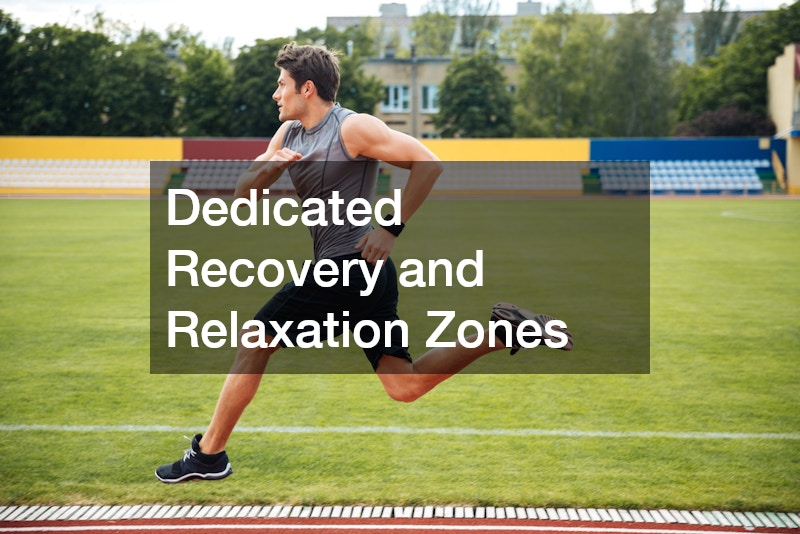A well-designed athletic training room is indispensable for any sports facility aiming to maintain or boost the performance of its athletes. One key feature to focus on is the ergonomic design of treatment areas. This involves having adjustable treatment tables and ergonomic seating that can accommodate a diverse range of body sizes and injury needs, thereby decreasing discomfort and enhancing recovery times.
With usability and comfort in mind, an ergonomically designed space helps both the athletes and the healthcare providers perform their best.
Proper ergonomics ensure that athletic trainers can carry out evaluations and treatments effectively. This can make a significant difference in reducing the risk of additional injuries caused by improper positioning during treatment. In addition, adjustable equipment can be crucial for specific treatments, offering flexibility to cater to different athlete needs. Incorporating technology like electric table adjustments enables trainers to focus more on treatment rather than manual labor. Technological improvements can help reduce the physical stress that trainers might otherwise experience during long sessions.
Adequate space around each treatment area allows for multiple trainers to work simultaneously. This is especially useful during peak hours when several athletes may require treatment at once. By efficiently utilizing the space, an athletic training room can offer immediate attention to any injuries that occur during practice or competition. Also, establishing separate zones for different types of treatment (e.g., massages, ultrasound therapy, or electrical stimulation) can help avoid bottlenecks in the workflow. An organized, spacious setup can drastically improve both trainer efficiency and athlete satisfaction.
State-of-the-Art Rehabilitation Equipment

In the quest for optimal athletic performance, the role of advanced rehabilitation equipment cannot be underestimated. Cutting-edge tools allow athletes to undergo recovery processes that are tailored to their specific injuries, thereby ensuring a more efficient healing trajectory. Moreover, state-of-the-art rehabilitation equipment can address a wide array of injuries, from sprained ankles to more complex ligament repairs, making the athletic training room a versatile hub for recovery.
One effective piece of equipment includes aqua therapy pools, which facilitate low-impact exercises crucial for rehabilitation. These pools make it easier for athletes to perform exercise routines without placing excessive strain on joints and muscles. The use of resistance bands, treadmill systems underwater, and adjustable water levels can make rehab more effective, allowing athletes to engage multiple muscle groups simultaneously. Importantly, aqua therapy pools promote full-body workouts in a controlled environment, aiding in faster recovery.
High-tech diagnostic tools make a noticeable impact on personalized rehabilitation plans. Devices that measure joint angles, muscle strength, and other parameters help trainers and therapists tailor treatment plans. Real-time data can lead to instant feedback, further refining the recovery process. Advanced motion-capture systems provide valuable insights, pinpointing deficiencies in movement and offering corrective solutions. These tools contribute to a data-driven, personalized approach that helps athletes achieve quicker and more successful recoveries.
Comprehensive Storage and Organizational Systems
A successful athletic training room must incorporate efficient storage and organizational systems. Proper storage solutions allow trainers to easily access medical supplies, rehabilitation equipment, and other necessary materials without wasting time. Ample storage ensures essential items like bandages, ice packs, and splints are readily available, reducing the risk of disrupting treatment due to lack of supplies. Specially designed cabinets and shelves make it easier to catalog and replenish stock, contributing to a seamless operation.
Organizational systems go beyond just storage, extending to how space is utilized. Clearly labeled sections for different types of treatment equipment prevent clutter and confusion, enabling trainers to find what they need promptly. This ease of access cuts down on time, allowing trainers to devote more attention to athletes. Organizing items based on frequency of use can also improve operational efficiency. For example, keeping frequently used items like tape and wraps in easily accessible drawers can save valuable time.
Additionally, digital inventory management systems have become an innovative solution for maintaining optimal stock levels. These systems track the consumption of supplies in real time, issuing alerts whenever stock runs low. By automating inventory management, trainers can avoid last-minute supply shortages and focus more on athlete care. Advanced software allows for seamless integration of supplier systems, ensuring timely restocking. As the demands of athletic training intensify, such advanced organizational systems are no longer luxuries but necessities.
Dedicated Recovery and Relaxation Zones

Recovery and relaxation are fundamental components of effective athletic training. Incorporating dedicated recovery zones in an athletic training room provides athletes with an opportunity to decompress both physically and mentally. These relaxation zones can feature massage chairs, zero-gravity recliners, or calming sensory experiences that include adjustable lighting and soundscapes. Offering these amenities supports holistic recovery, easing muscle tension and reducing stress levels. Such spaces become invaluable for athletes who endure long training sessions and competitions.
The concept of mental recovery is as essential as physical recovery and can have a significant impact on overall performance. Psychological resilience is increasingly recognized as a critical aspect of athletic success. Implementing spaces where athletes can engage in mindfulness exercises, deep breathing, or meditation can help improve focus and mental clarity. These practices allow athletes to achieve a balanced state of mind, positively affecting their training and competition outcomes. Cognitive rest delivered through dedicated recovery zones prospects overall performance improvements.
Beyond hospitality aesthetics, implementing therapeutic amenities such as compression therapy devices and infrared saunas can offer additional recovery solutions. These technologies contribute to muscle repair, improved circulation, and reduced inflammation. An athletic training room equipped with next-level relaxation amenities keeps athletes motivated and committed to their recovery regimens. Environment-focused solutions like aromatherapy or nature-inspired designs further enrich these spaces, fostering an ambiance conducive to healing and well-being. With a blend of technology and tranquility, recovery zones have emerged as essentials in athletic training ecosystems.

